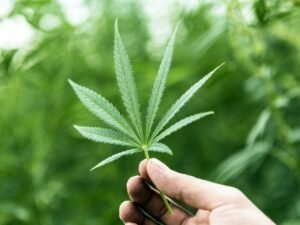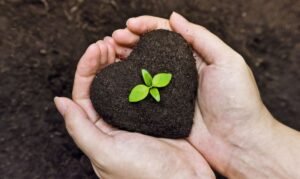Integrated Farming System
The prosperity of any country depends on the prosperity of its farmers because the farmer’s not only produce food products for the entire nation but also contribute a major amount to raise the economy of that country. Thus the farming system is an important sector which needs to prosper and flourish. Farming provides the basic raw materials to industries as well and modern farmers always try to minimize costs and achieve maximum output. Therefore, it’s really important to analyze and understand the required inputs & management for a farm.

Farmers include so much in their farm like crop production, livestock, poultry, fisheries, bee keeping, etc to sustain and fulfill their needs. When one or more enterprises are combined with cropping, it gives greater returns to the farmers, than a single enterprise, when they are chosen carefully and executed properly with good planning. The farming system should be planned for effective integration of the enterprises in such a way that it promotes crop production also.
How To Do Intercropping I Organic Agriculture?
Arable cropping is not sufficient as a source of income to the marginal farmers and to support their farm income they perform extra activities like dairy, poultry, fish culture, sericulture, biogas production, mushroom cultivation, agroforestry, horticulture, etc. The only solution to this problem is the Integrated Farming System so that the farmers could increase their food production as well as their income with limited resources.
We will see each factor related to the Integrated farming system in this article.
What is Integrated Farming System?
Integrated farming system is an approach to combine crops and animals in a simultaneous way. It involves simultaneous cultivation of crops along with livestock & horticulture. It aims to deliver more sustainable agriculture. It helps the poor farmers to diversify farm production, increase the source of income, improve the quality & quantity of produced crops and properly use the unutilized resources.

According to Paul Harris, It is a system which comprises an interrelated set of enterprises with crop activity as base, that will provide ways to recycle produce and “waste” from one component becomes an input for another component of the system, which reduces production cost and improves soil health and production and/or net income from the farm.
The major concept of this system is to utilize the by-product or waste of one system to another so that nothing goes wasted. It is based on attention to detail, constant improvement in the farming methods and managing all the available resources so as to produce maximum output. For example – pigs can be used to dig the earth and animal manure can be used as a fertilizer, birds can be used to clear the branches from rotten fruits & weeds in a garden or a vineyard and they can also help as fertilizers.
Factors related to Integated Farming System
There are many factors that need to be considered before integrating the farm enterprises. They are:
- The soil condition and climatic features of the selected land
- The available resources, land, labor, marketing costs & Capital Investment
- Utilization of resources
- Economics of the proposed IFS
- Skills & Knowledge of the farmer
- Community, transport & marketing facilities
Objectives & Goals of Integated Farming System :
The farming resources available to the farmers need to be utilized properly for Sustainable Agriculture and sustainability is important so that the resources don’t harm the environment. Integrated farming system runs with an overall objective of evolving a technically feasible & economical farming system model so that it can combine cropping with other enterprises to generate income & employment from the farm.
Some of the specific objectives of Integrated Farming Systems are:
- To identify existing farming systems and access their viability
- To formulate proper farming model for different farming situations
- To ensure the optimal utilization of available resources and recycling of farm residues within the farm
- To maintain sustainability of the farm without damaging other resources or environment
The Goals of Integrated Farming Systems are:

- To provide a steady and stable income from the farm
- To reduce pests & diseases through natural cropping and reduce the use of chemicals to achieve agro ecological equilibrium
Components of Integrated Farming Systems
Various components of Integrated Farming Systems are:
- Crop Husbandry
- Livestock production
- Poultries
- Horticulture
- Aquaculture
- Sericulture
- Mushroom Cultivation
- Agroforestry
- Biogas plants
- Duckery
- Bee-keeping
- Vegetables
Elements of Integrated Farming System
Different Elements related to Integrated Farming Systems are:
- Watershed
- Farm ponds
- Biopesticides
- Biofertilizers
- Plant residues as pesticides
- Biogas
- Solar energy
- Compost making (Vermicompost)
- Green manure
- Rain water harvesting
Need of Integrated Farming Systems
Integrated farming comprises cropping methods and other farming techniques which satisfy both ecological & economic demands. The farmers need to adjust their management measures in concern with selection of crop variety, method of cultivation, plant nutrition & protection and other factors.
Here we mention some points as to why this Integrated system of farming is needed.

- To reduce the risk of biotic & abiotic components
- High input costs
- To satisfy the rising needs of food, feed, fibre, fuel and fertilizer
- Nutritional requirement of a family
- To fulfill the increased demand of soil nutrients
- To increase the income
- Enhance employment
- Improve the standard of living
- Sustainability
Types of Integrated Farming Systems
Integrated farming system is a combination of different enterprises depending upon various factors and needs. There are many models under IFS which are stated below:
- Crop – livestock farming system
- Crop – livestock – fishery farming system
- Crop – livestock – poultry – fishery farming system
- Crop – fishery – poultry farming system
- Crop – livestock – fishery – vermicomposting farming system
- Crop – livestock – forestry farming system
- Agri – silviculture farming system
- Agri – horti – silvi – pastoral farming system
- Agri – fishery – mushroom cultivation
- Pig cum fish culture
- Agri – duckery – poultry system
When to introduce Integrated Farming Systems in the farm
Integrated farming system is dependent upon some ideal situations as to when it should be introduced in your farm. They are:
- When there is a need to improve the quality of soil
- When the household fells below poverty line or when there is a struggle for food
- If the salinity in the soil increases due to addition of inorganic fertilizers
- When seeking maximum profit on existing farm
- When the farm gets eroded by wind or water
- When there is a need to reduce chemical control methods
- When pollution or waste disposal costs is to be reduced
- When water overflows due to stored water on-farm in ponds or river-charged
Advantages of Integrated Farming Systems

The advantages of IFS include many factors such as – sharing of resources, effective use of labour, conservation, preservation & utilization of farm biomass, effective use of wastes/manures, monitoring of soil health, income & employment for peoples and increase in economic resources. It focuses on ensuring sustainable use of natural resources so that both the present and future generations could benefit.
Some benefits are:
- Opportunity to increase productivity of crops per unit area per unit time
- Utilization of waste resources, reduction of production costs, elimination of middlemen interference, thereby increase in profits
- Sustainable Agriculture
- Production of balanced food
- Minimized Environment pollution
- Effective recycling of waste materials
- Higher net return to land and labour resources of the farming family throughout the year
- Full utilization of new technologies
- Generating biogas, thus saving energy
- Meeting with the crisis of fodder by effectively utilizing every piece of land
- Solving fuel and timber crisis by linking agroforestry which will reduce deforestation and will preserve the ecosystem
- Combination of enterprises will generate employment
- Development of allied agro industries by taking the production to commercial level
- Increasing the input efficiency to the farm and benefit cost ratio
Limitations of Integrated Farming Systems
There is more responsibility as all the spheres of farming has specific features.
- Some farming models contradict each other like fisheries with cattle rearing and plants.
- Proper study is important. To prevent pollution proper management & care is needed. Avoid overdose of manure to improve yield as it can harm.
- Combination of enterprises should be done properly after noticing each & every detail so that it doesn’t cause harm to the environment or the enterprises itself, like birds, pigs and fish can cause influenza.
- Intensive recycling of wastes can cause loss of nutrients
- Can be expensive to poor farmers as in using expensive technologies
Conclusion
Integrated farming system is a promising approach to increase the productivity and profitability by efficient utilization of available resources and recycling the by-products. It can generate better employment opportunities to the farming communities and can provide them a better livelihood and economic support with nutritional security.




